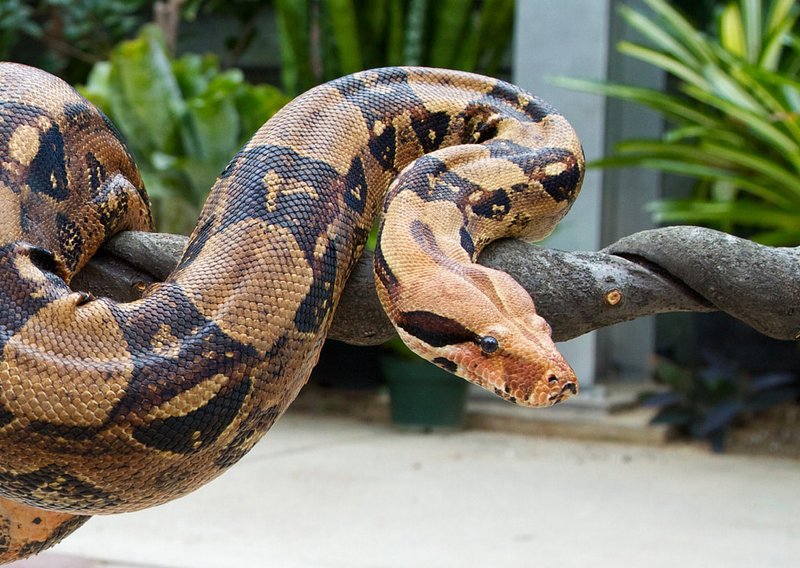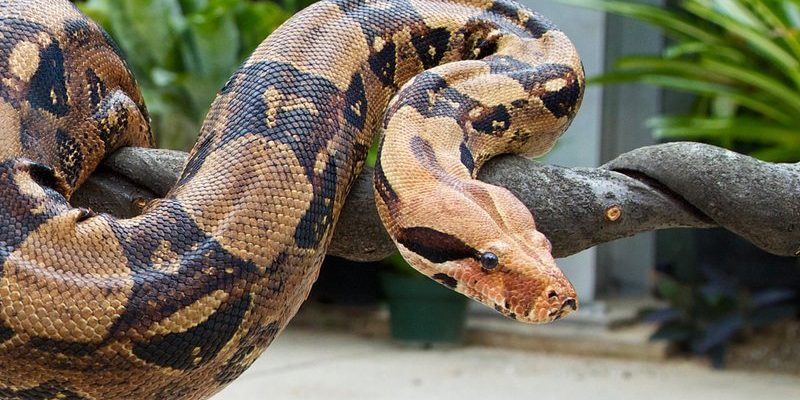
In the wild, identifying a boa constrictor involves observing its distinct physical features, understanding its behavior, and knowing where to look. It’s not just about spotting the snake; it’s about appreciating its role in the ecosystem. So, whether you’re an avid hiker or just curious about wildlife, learning how to identify a boa constrictor can add a layer of excitement to your outdoor adventures. Here’s everything you need to know.
Physical Characteristics of a Boa Constrictor
One of the first things you’ll notice about a boa constrictor is its size. These snakes can grow anywhere from 6 to 13 feet long, with some exceptional individuals reaching even longer. Honestly, that’s not something you see every day! Their body is robust and muscular, which contributes to their reputation as powerful constrictors.
The skin of a boa constrictor is another giveaway. They have beautiful patterns that vary greatly based on geographic location. You might see shades ranging from brown and tan to reddish hues, often with dark blotches or spots. This coloration helps them blend into their surroundings, making them excellent ambush predators. If you think you’re seeing a stick or a fallen branch, take a closer look—it might just be a well-camouflaged boa!
Another striking feature is their triangular head, which is wider than their neck. This shape is important for their hunting technique, as it allows them to grasp their prey effectively. And don’t forget to check for their large, heat-sensitive pits located on their lips. These help them detect warm-blooded animals, even in the dark. So next time you’re out hiking, keep an eye out for that unique head shape and coloration!
Behavior and Movement
You might be wondering how to spot a boa constrictor in action. Unlike some snakes that are quick and dart away, boas tend to be more sluggish and deliberate in their movements. They often move in a fluid, serpentine manner, which can make them look graceful as they navigate through their environment.
When hunting, a boa constrictor usually relies on ambush techniques. They often lie in wait for unsuspecting prey to wander too close. This behavior, combined with their excellent camouflage, can make them tricky to spot. If you see a snake coiled on a branch or nestled among rocks, it may very well be a boa waiting for its next meal.
If you happen to see a boa in the wild, pay attention to its behavior. These snakes are primarily nocturnal, which means they’re more active during the night. If you’re out in the evening or early morning, your chances of encountering one increase significantly. Be quiet and respectful of their space, as sudden movements can startle them.
Habitat and Range
Understanding where boa constrictors live can significantly increase your chances of spotting one. These snakes are primarily found in tropical rainforests, but they also inhabit savannas and shrublands. They’re common in Central and South America—think places like the Amazon rainforest or the Caribbean islands.
Boa constrictors love areas near water sources, so look for them near rivers, swamps, or ponds. They’re excellent swimmers and often hunt for prey in water as well. If you find yourself near a body of water in their range, keep your eyes peeled; you might just catch a glimpse of one!
Additionally, they can sometimes be found in trees, as they are known to climb. If you’re hiking through a lush forest, look up! You might be surprised at what you see among the branches. Spotting a boa curled around a tree branch can be a breathtaking sight.
Distinguishing a Boa Constrictor from Other Snakes
It’s important to know how to differentiate a boa constrictor from other similar-looking snakes. For instance, the *Python* species can be confused with boas due to their size and appearance. Here’s the thing: while both are large constrictors, boas generally have a more vibrant coloration and distinct patterns that make them stand out.
Another thing to look for is the tail. Boa constrictors have a relatively short tail compared to their body size, while pythons have longer, more robust tails. Additionally, boa constrictors have heat-sensing pits, as mentioned earlier, which many pythons lack.
When it comes to their behavior, boas are typically more docile than some other snakes. If you find yourself close to a snake that seems curious but not aggressive, you may be looking at a boa constrictor. If it’s in a defensive posture, puffing up and hissing, it may be a different species that feels threatened.
Signs of Presence
If you’re very keen on spotting a boa constrictor but you don’t see one, you can look for signs of their presence. One common indicator is shed skins. Boas, like all snakes, shed their skin as they grow. Finding shed skin can be a sign that a boa has been in the area recently.
Another clue could be their droppings, which are usually large and distinctive. They can contain fur or bones depending on their diet, which primarily consists of small mammals and birds. If you spot remains of fur or other remnants, it might suggest a boa has made it its hunting ground.
Also, listen for the rustling of leaves or a soft hiss. While they’re not known for being loud, you might catch the sound of a boa shifting through the undergrowth. Keep your ears open—you never know when you might get lucky!
Best Practices for Observing Boas Safely
If you do manage to find a boa constrictor in the wild, it’s crucial to observe safely and responsibly. First and foremost, always maintain a respectful distance. While boa constrictors are generally not aggressive, they are wild animals and should be treated with caution.
Avoid trying to touch or pick them up. Instead, take your time to observe their behavior and enjoy the experience. Bring binoculars if you want a closer look without intruding on their space. This way, you can still appreciate the beauty of these magnificent snakes without putting yourself or the snake at risk.
Finally, always follow local wildlife guidelines when observing snakes or any wildlife. Protect their habitat and ensure that future generations can enjoy the same sightings. Remember, the goal is to appreciate them in their natural environment, not disrupt it.
Identifying a boa constrictor in the wild can be a thrilling experience that deepens your appreciation for nature. By understanding their unique physical characteristics, behaviors, and habitats, you can increase your chances of spotting one on your next outdoor adventure. Remember to take your time, observe from a safe distance, and enjoy the beauty of and the role these creatures play in our ecosystem. Happy hunting!

